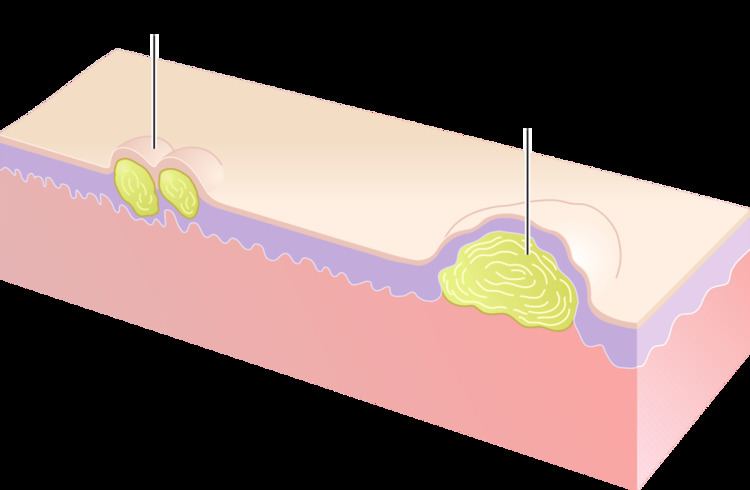Specialty dermatology ICD-9-CM 694 | ICD-10 L10-L14 MeSH D012872 | |
 | ||
A vesiculobullous disease is a type of mucocutaneous disease that is characterized by vesicles and bullae (i.e. blisters). Both vesicles and bullae are fluid-filled lesions, and they are distinguished by size (vesicles being less than 5–10 mm and bulla being larger than 5–10 mm, depending upon what definition is used). In the case of vesiculobullous diseases which are also immune disorders, the term immunobullous, is sometimes used. Example vesiculobullous diseases include:
Some features are as follows:
References
Vesiculobullous disease Wikipedia(Text) CC BY-SA
